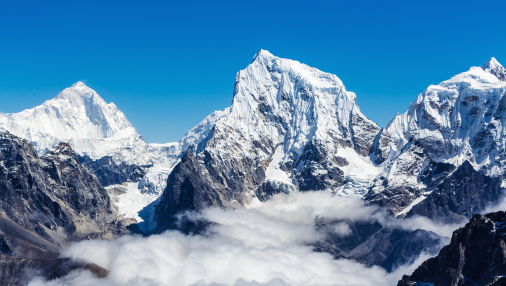Where is Kailash Parvat (Kalesh Pervat)? — Complete Travel Guide
A practical pilgrimage and travel guide to Mount Kailash (Kailash Parvat) — location, routes, Kora/parikrama, permits, best time to visit and packing tips.

Introduction: Why Kailash Parvat (Kalesh Pervat)?
Kailash Parvat (also spelled Kalesh Pervat in some places) — widely known as Mount Kailash (also Kailāsa or Kangrinboqe) — is one of the world's most sacred mountains. It is an important pilgrimage site for Hindus, Buddhists, Jains and followers of the Bon religion. Pilgrims believe that completing the kora (parikrama / circumambulation) of Kailash washes away sins and purifies the soul.
Unlike many famous peaks, Mount Kailash is not climbed out of respect for its sacred status — the pilgrimage is focused on the circuit around the mountain rather than reaching any summit.
Where is it located?
- Region: Ngari Prefecture, Tibet Autonomous Region, People's Republic of China.
- County: Burang (western Tibet), near border regions with India and Nepal.
- Altitude: approximately 6,638 meters (21,778 ft).
- Coordinates: about 31.0675° N, 81.3119° E.
The mountain sits in a remote part of western Tibet — road connections exist but many stretches are rugged and at very high altitude. Because it lies within a sensitive border region, independent travel is restricted and you will typically travel via an approved tour operator who handles permits and logistics.
How to get there
Reaching Mount Kailash requires planning, permits and normally booking with an experienced operator. Common access routes:
1. Via Kathmandu, Nepal → Tibet
One popular option is crossing through the Gyirong border between Nepal and Tibet. Some itineraries use Kathmandu as the starting point; operators arrange the necessary Tibet permits and overland travel toward Kailash.
2. Via Lhasa / Western Tibet (mainland China)
Fly or take the train to Lhasa, then travel overland west across Tibet to Ngari and Darchen (the base for the Kailash kora). This route needs a Tibet Travel Permit and related documents that your operator will arrange.
3. From Xinjiang (Kashgar) or northern routes
A longer, more adventurous approach crosses Xinjiang and enters western Tibet from the northwest — suited to seasoned overland travellers and longer tours.
4. India-side pilgrimage routes
For Indian pilgrims there are special/government-sanctioned routes (for example via Lipulekh in Uttarakhand or specific Nathu La arrangements) with restricted quotas and strict scheduling — these need early planning and are highly regulated.
The Kailash Kora / Parikrama
The primary spiritual practice is the Kora (also called Parikrama) — circumambulating around Mount Kailash.
- Distance: roughly 52 km (outer circuit).
- Typical duration: about 3 days for most trekkers.
- Highest point: Dolma La Pass, around 5,630 meters.
Typical itinerary: start from Darchen (the base), trek to the monasteries and camps (Chuku/Chogu, Drirapuk), cross Dolma La, reach Zutrulpuk and return to Darchen. Many pilgrims also include a visit to Lake Manasarovar, which can add several days to the trip.
Some devotees perform full prostrations along the route (a physically demanding ritual), which can extend the circuit considerably.
Best time & climate
Best months: May–June and September–October — these offer the most stable weather, clearer skies and more passable roads.
Monsoon months (July–August) can bring landslides, muddy sections and blocked roads. Winters are extremely cold and many routes will be closed or unsafe.
Nights and higher-altitude sections are very cold; snow or frost can appear even in the shoulder seasons.
Permits & regulations
Because Kailash is in Tibet and in a sensitive border region, you will need several permits:
- Tibet Travel Permit (TTP) / Tibet Entry Permit
- Alien’s Travel Permit / Restricted Area Permits
- Other frontier or border-area passes as required
These are usually arranged by your tour operator once you supply passport details. Entry rules differ by route (Nepal→Tibet vs. entering from China) and sometimes a group visa or special transit paperwork is used.
What to pack & preparation
Essential packing and preparation notes:
- Clothing: thermal layers, fleece/wool layers, a down jacket, windproof/waterproof shell, warm gloves, hat.
- Footwear: sturdy trekking boots and good socks.
- Sleep gear: a sleeping bag rated for sub-zero temperatures (accommodations can be basic).
- Health: acclimatize gradually — altitude sickness is real; carry medication and consult your doctor. Bring a small first-aid kit.
- Other: sunglasses, sunscreen, lip balm, water purification tablets, headlamp, power bank.
Physical fitness and prior high-altitude experience will help. Allow days for acclimatization at intermediate altitudes before attempting the kora.
Practical tips
- Book with a reputable operator who has experience in Ngari/Kailash routes.
- Carry cash — remote areas may not accept cards.
- Respect local customs and religious practices — photography in some places or of certain rituals may be discouraged.
- Travel insurance that covers high-altitude trekking and emergency evacuation is highly recommended.

